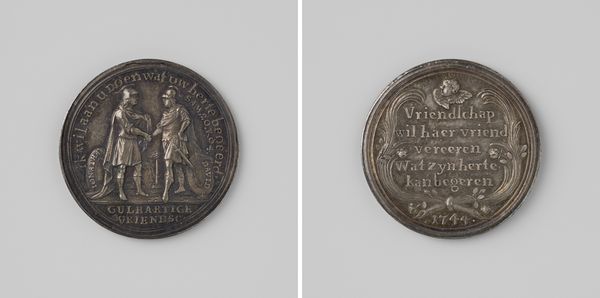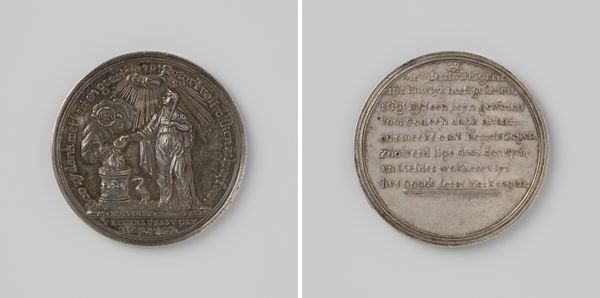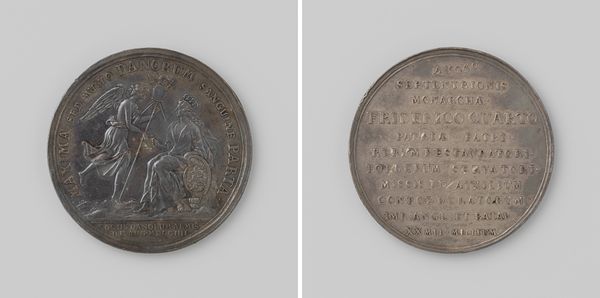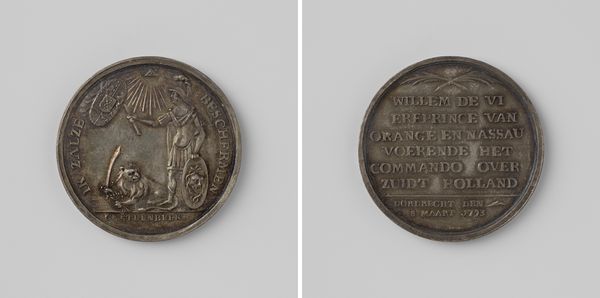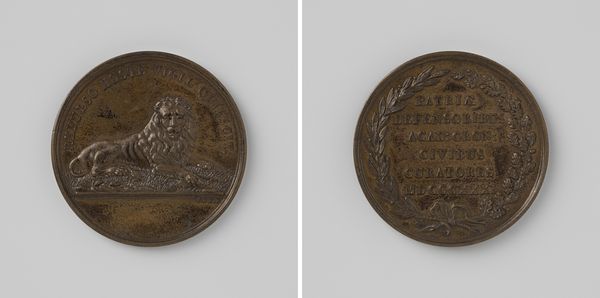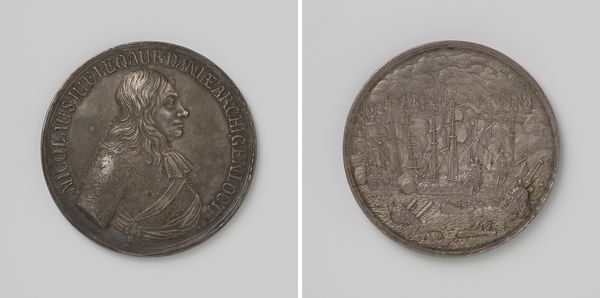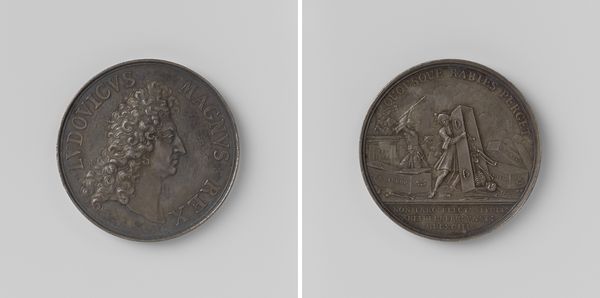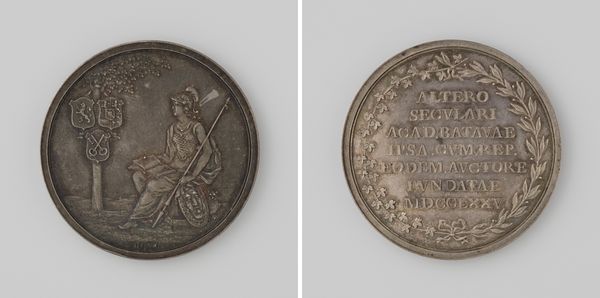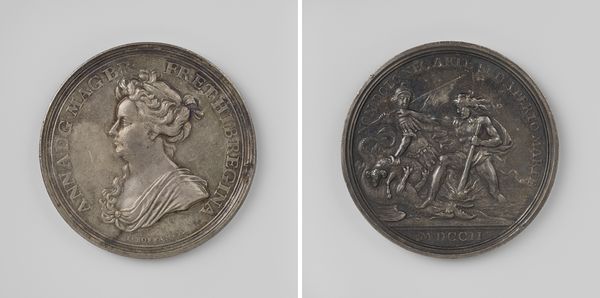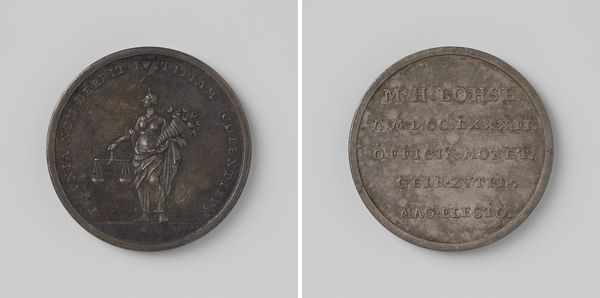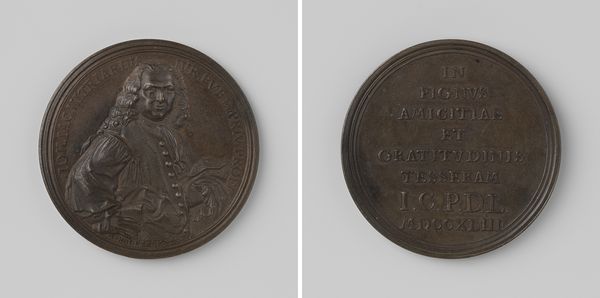
metal, relief, sculpture
#
portrait
#
medal
#
baroque
#
dutch-golden-age
#
metal
#
relief
#
sculpture
#
ceramic
#
history-painting
Dimensions: diameter 3.1 cm, diameter 3 cm, weight 7.93 gr
Copyright: Rijks Museum: Open Domain
Curator: Today we are looking at a relief sculpture by Martin Holtzhey, a metal medal from 1747 commemorating the “Elevation of William IV, Prince of Orange-Nassau, to Stadtholder.” Editor: My first impression is of its formality. The textures seem polished and purposeful, despite being somewhat worn by time, and the engraving feels very exact. Curator: Holtzhey clearly intended to emphasize the legitimacy and strength of William's position through a deliberate artistic construction. Note the choice of materials, where metal adds an inherent sense of durability, speaking to the Stadtholder’s lasting impact on Dutch society and politics. Editor: The inscription encircling William’s effigy serves to anchor his status as not only leader, but a symbol. It uses his portrait not just for likeness, but for branding, solidifying his lineage and right to rule within a collective understanding. And that rising sun on the reverse--very evocative. Curator: That is no accident; these medals functioned as critical pieces of political communication. Mass-produced and distributed to key figures, they served as tangible endorsements of William’s rule, embedding his image and narrative in the public consciousness during a pivotal transition of power. The strategic placement of text further highlights the socio-political motives driving the production of such artworks. Editor: Indeed, when looking closely at Holtzhey's craft, you can notice how effectively the artist manipulated the metal to articulate light and shadow and even created dynamism in what could otherwise be a flat portrait. Curator: Precisely. The careful detailing in William’s hair and attire, and the rising sun are not just decorative. They reinforce ideas of enlightened leadership and the dawning of a new era under his rule, which were absolutely essential themes that served his political ascendancy. Editor: So, this medal not only carries historical significance, but provides us with some key visual tactics employed in Dutch political communication during that period. Curator: A powerful reminder of how art serves political functions, embedding ideological messages in our everyday world.
Comments
No comments
Be the first to comment and join the conversation on the ultimate creative platform.
